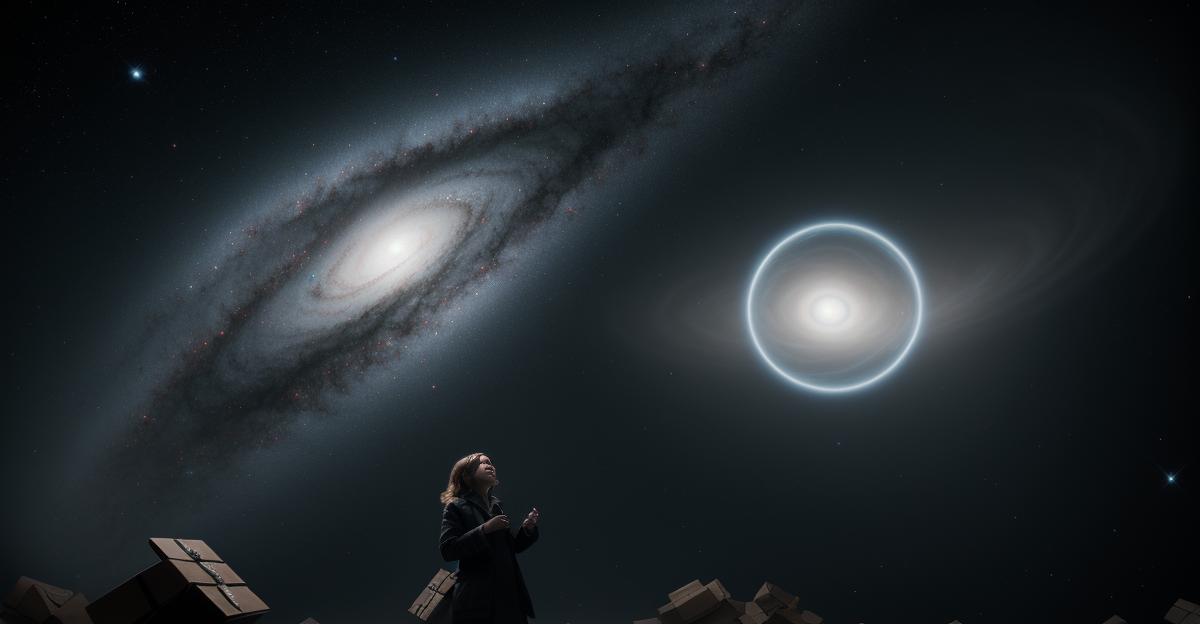
Explore quantum entanglement: Is it Einstein's "spooky action at a distance" or the universe's actua
Alright, buckle up, because we’re about to tumble down the quantum rabbit hole – a place so strange, even Alice would need a GPS. We’re talking quantum entanglement, that mind-boggling phenomenon Einstein famously (and somewhat dismissively) called “spooky action at a distance.” But what if it’s not spooky? What if it’s the universe’s hidden operating system, a cosmic Wi-Fi humming beneath the surface of everything we know? We’re going to unpack quantum entanglement, explore its potential for information transfer, and ponder the implications for our understanding of… well, *everything*. Prepare to question the very fabric of space, time, and maybe even your perception of reality. Consider yourself warned! ### Understanding Quantum Entanglement: Beyond Spooky Action So, what *is* this “spooky action,” really? In simple terms, quantum entanglement occurs when two particles become inextricably linked. Their fates are intertwined, regardless of the distance separating them. Measure a property of one, and you instantly know the corresponding property of the other, even if they’re galaxies apart. Imagine two gloves: you have one in a box, and a friend has the other on the other side of the world. Without looking, you know that if yours is a left-hand glove, your friend’s must be a right-hand glove. Entanglement is far weirder, though, because the particles don’t *have* a definite property until measured! A classic example involves electron spin. Entangle two electrons. If you measure one and find it has “spin up,” the other instantaneously has “spin down,” no matter the distance. Another common example is photons and their polarization. This instantaneous correlation has been experimentally verified countless times, making it one of the most bizarre and well-established facts in quantum mechanics. ### Entanglement and Information Transfer: A Cosmic Network? Now, this is where things get *really* interesting. If entangled particles are connected, could we use them to transmit information? The answer, as is often the case in the quantum world, is a frustratingly nuanced “maybe.” One promising concept is “superdense coding,” allowing us to transmit two bits of classical information using only one qubit (quantum bit) via entanglement. Even more tantalizing is “quantum teleportation.” Forget Star Trek (sorry, Captain Kirk!), this isn’t about beaming physical objects. Instead, it’s the transfer of a quantum state from one particle to another. Critically, this isn’t faster-than-light communication of *classical* information. Quantum teleportation requires a classical communication channel *in addition* to the entangled pair to reconstruct the original quantum state. Still, the very idea of “teleporting” a quantum state is mind-blowing. ### The Limits of Entanglement: No Faster-Than-Light Communication (Yet?) Hold on a second – before you start dreaming of interstellar phone calls, let’s tap the brakes. The “no-communication theorem” is a fundamental principle stating that entanglement *cannot* be used to send classical information faster than light. While the correlation between entangled particles is instantaneous, you can’t *control* the outcome of a measurement to encode a specific message. Observing one particle doesn’t allow you to directly influence the state of the other in a way that transmits usable information. That said, scientists haven’t abandoned the dream of leveraging entanglement for communication. Ongoing research explores theoretical loopholes and potential future applications that might one day circumvent these limitations. The future is unwritten, and quantum mechanics loves to surprise us. ### The Universe as a Holo-Network: Interconnectedness at a Fundamental Level Now, we’re diving headfirst into truly mind-bending territory. The holographic principle suggests that all the information contained within a volume of space can be encoded on its 2D boundary. Think of a credit card hologram projecting a 3D image. Some physicists theorize that our entire universe might be a holographic projection from a distant, 2D surface. So, where does entanglement fit in? Some theories propose that entanglement might be the very mechanism by which information is transferred and processed across this holographic network. It’s the underlying infrastructure, enabling the 2D surface to project the 3D reality we experience. Spooky, indeed! ### Implications and Speculations: A New Understanding of Reality? A deeper understanding of entanglement could unlock revolutionary advancements in quantum computing and communication. Imagine computers capable of solving problems that are currently impossible, or secure communication channels impervious to eavesdropping. The potential is immense. But the philosophical implications are even more profound. Entanglement challenges our classical understanding of space, time, and locality. It hints at a universe that is fundamentally interconnected and holistic, where everything is linked in ways we are only beginning to grasp. Perhaps we are all just nodes in a giant cosmic network, constantly exchanging information through the quantum web. What are your thoughts? Could entanglement truly be the universe’s Wi-Fi, connecting everything at a fundamental level? Quantum entanglement, while still shrouded in mystery, points to a deeper level of interconnectedness in the universe, potentially acting as a fundamental mechanism for information transfer. While faster-than-light communication remains elusive (for now!), ongoing research continues to push the boundaries of our understanding. Could entanglement be the key to unlocking a more complete picture of reality, revealing a universe that is fundamentally interconnected and operating like a vast, cosmic Wi-Fi network? What new technologies might emerge from a deeper understanding of this phenomenon? Let me know in the comments! And don’t forget to share this with your friends who need a good dose of quantum weirdness in their lives.
Source: World Quantum Day 2025: What is quantum superposition and what does it mean for quantum computing?
Enjoyed this? Check out our YouTube channel for video versions!
Enjoyed this? Check out our YouTube channel for video versions!



